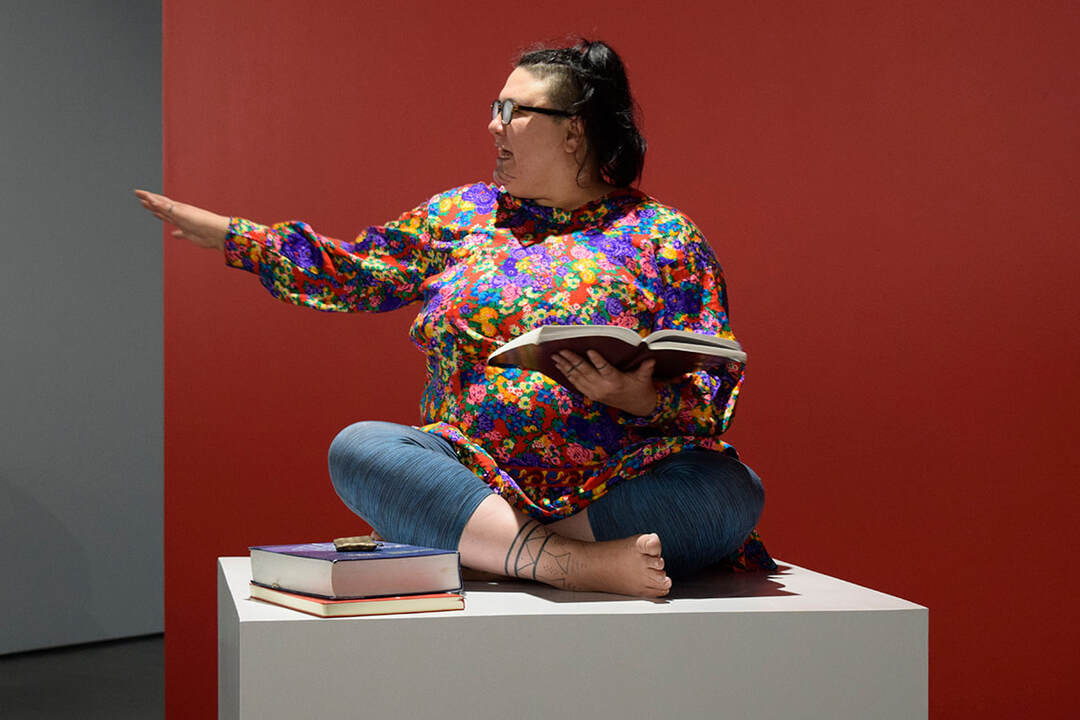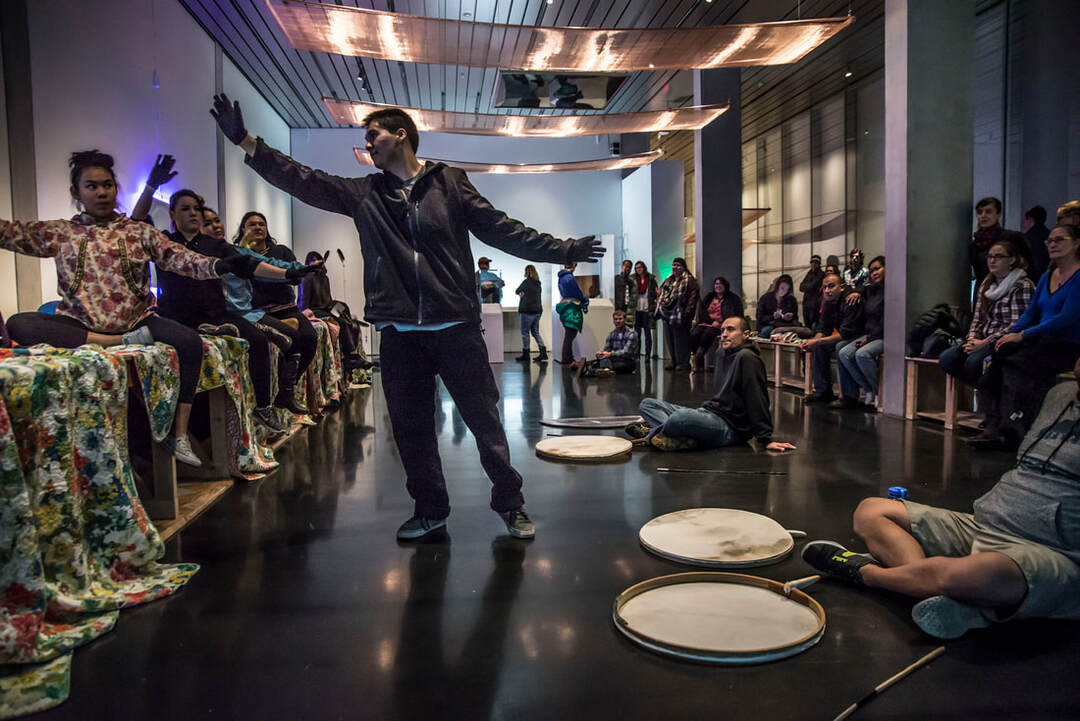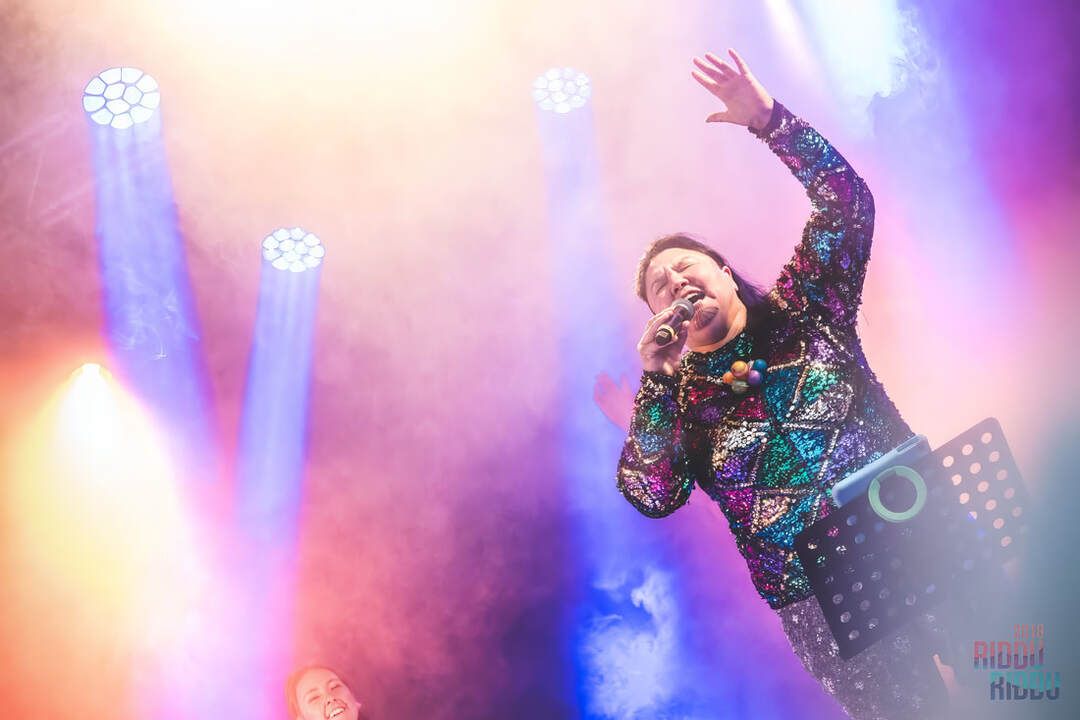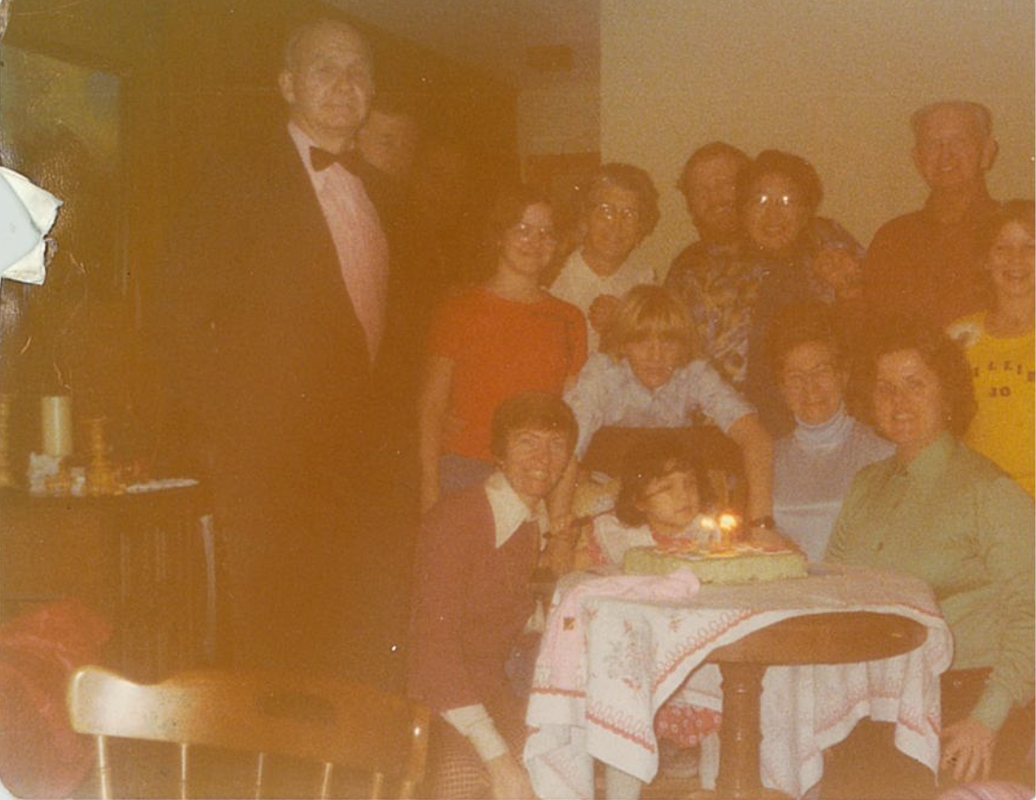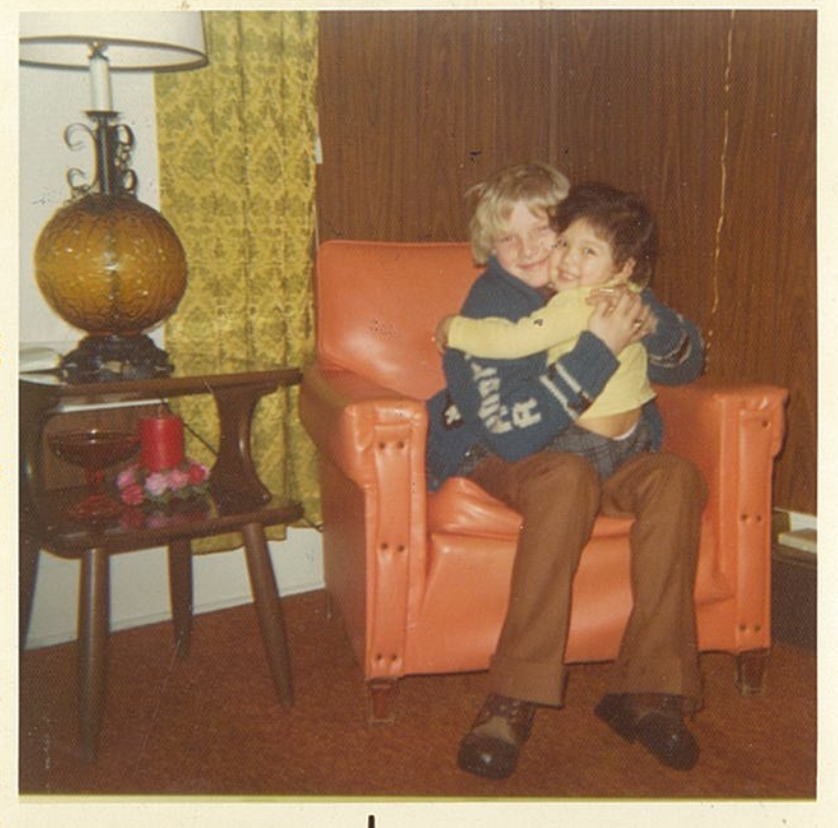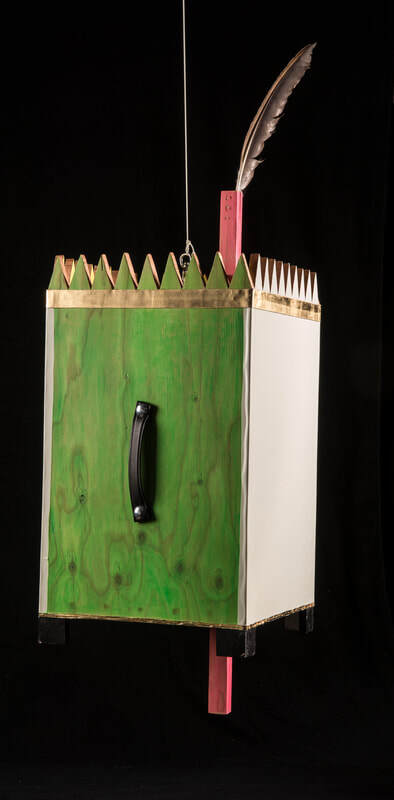
Allison Akootchook Warden, Iñupiaq
Kalukaq from the Future (Sent from the Eagle Mother)
plywood, iridescent wood screws, glo polypropylene rope, u-bolt, Titebond III ultimate wood glue, plastic wood all-purpose wood filler, carraige bolts, leather pelt, glow-in-the dark paint, glow in the dark vinyl, fake eagle feather, fluid acrylic, heavy gloss, calfskin belt, gel, love and prayers
2016
“The process of creating this kalukaq was transformative. I hadn’t thought that in my lifetime I would make an Iñupiaq box drum. It started when our Kisaġviġmiut Dance group began to form, and that it became clear that the co-leader of our group, my cousin Isaiah Patkutaq Cakicenaq McKenzie, was preparing to make a kalukaq for the group, but that it most likely wouldn’t be ready for the freezing that needs to happen for the opening. Also, his kalukaq is his own design, and I thought about the space I was creating, how it would be good to have one that wouldn’t be performed, but would fit into the future/ancient aesthetic. I asked people about kalukaq design and I read a few passages in books and online, as well as studying images. My Tlingit friend Laura Schleifman enlisted the help of her boyfriend Ryan Rapuzzi, and we started to craft the box drum. I am very thankful to the both of them. In the process of making this drum, I learned a lot about the meaning behind the drum and the ceremony that goes with the drum. I watched videos of the dance being performed today. I wanted the box to glow in the dark because of the heartbeat of the Eagle Mother, to honor the story of the very first box drum, which is different from this one.”
Dimensions
height at tallest point 64" (with feather)
width of two sides 19 1/2"
width of other two sides 18"
height from mountains to feet (without stick and feather) 32"
Kalukaq from the Future (Sent from the Eagle Mother)
plywood, iridescent wood screws, glo polypropylene rope, u-bolt, Titebond III ultimate wood glue, plastic wood all-purpose wood filler, carraige bolts, leather pelt, glow-in-the dark paint, glow in the dark vinyl, fake eagle feather, fluid acrylic, heavy gloss, calfskin belt, gel, love and prayers
2016
“The process of creating this kalukaq was transformative. I hadn’t thought that in my lifetime I would make an Iñupiaq box drum. It started when our Kisaġviġmiut Dance group began to form, and that it became clear that the co-leader of our group, my cousin Isaiah Patkutaq Cakicenaq McKenzie, was preparing to make a kalukaq for the group, but that it most likely wouldn’t be ready for the freezing that needs to happen for the opening. Also, his kalukaq is his own design, and I thought about the space I was creating, how it would be good to have one that wouldn’t be performed, but would fit into the future/ancient aesthetic. I asked people about kalukaq design and I read a few passages in books and online, as well as studying images. My Tlingit friend Laura Schleifman enlisted the help of her boyfriend Ryan Rapuzzi, and we started to craft the box drum. I am very thankful to the both of them. In the process of making this drum, I learned a lot about the meaning behind the drum and the ceremony that goes with the drum. I watched videos of the dance being performed today. I wanted the box to glow in the dark because of the heartbeat of the Eagle Mother, to honor the story of the very first box drum, which is different from this one.”
Dimensions
height at tallest point 64" (with feather)
width of two sides 19 1/2"
width of other two sides 18"
height from mountains to feet (without stick and feather) 32"
The above was installed as part of Unipkaaġusiksuġuvik (the place of the future/ancient), a performative installation at the Anchorage Museum in 2016.
